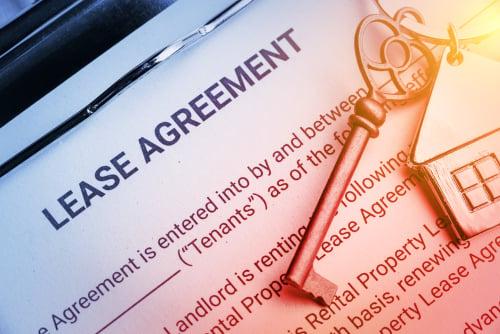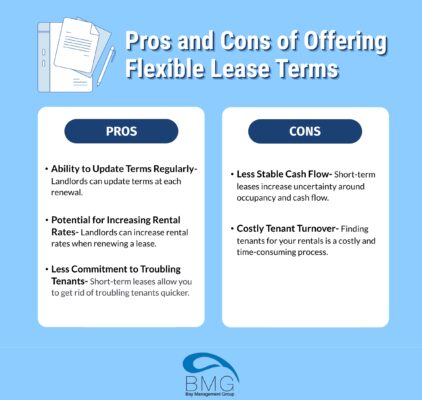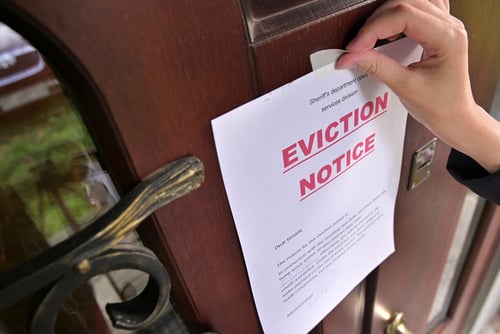In recent years, flexible lease terms have become more popular among landlords and Baltimore property management. Flexible terms give tenants more freedom and convenience while allowing landlords to charge more for their rentals. In this article, we’ll review the meaning of flexible lease terms, the pros and cons, and what to do if a tenant violates your rental agreement.

Contents of This Article:
- What Are Flexible Lease Terms?
- How Do Flexible Lease Terms Differ From Traditional Leases?
- Pros and Cons of Offering Flexible Lease Terms
- What to Do if a Tenant Violates the Lease Terms
- Ensure Rental Success With Property Management
What Are Flexible Lease Terms?
Flexible lease terms refer to rental agreements that allow tenants to adjust the conditions of the lease to fit their needs. For example, flexibility in a lease agreement may allow for shorter or longer lease durations, options for renewals, or the ability to make changes to a typical agreement.

Generally, a flexible lease agreement allows tenants to move into a space for less than a full year, whether it’s a six-month or month-to-month contract. Additionally, a flexible lease may include leases that can transfer from one apartment to another, school year leases, summer leases, or other short-term options.
These types of contracts are often desirable for tenants who move frequently or are unsure of their long-term plans. Additionally, they can help landlords who want to attract and retain tenants by offering a more personalized experience. That said, flexible lease terms vary depending on the property and landlord. Next, we’ll review some differences between flexible and traditional lease terms.
How Do Flexible Lease Terms Differ From Traditional Leases?
A traditional lease term is generally 12 months, whereas a flexible lease term may be month-to-month, six months, or another shorter period. As such, the main difference between the two lease types is the amount of time a tenant’s locked into the contract.
Short-term leases are more convenient and flexible than long-term leases, which is why many tenants prefer them. For instance, if you’re not planning on staying somewhere long or want to move without waiting for your contract to be up, you may opt for a short-term lease agreement.
However, tenants looking for stability will often opt for a traditional 12-month lease agreement. That way, you don’t have to worry about the terms changing from month to month or looking for a new rental after a few weeks. After all, landlords have the ability to change the terms of a rental agreement during a renewal. Renewals may occur each month, every six months, or another shorter duration of time.
While flexible lease terms favor tenants and some landlords, most tend to offer traditional 12-month lease agreements. Next, we’ll review some of the pros and cons of flexible lease terms for landlords.
Pros and Cons of Offering Flexible Lease Terms

Flexible lease terms provide several benefits and disadvantages for landlords and tenants. However, they’re generally beneficial for both parties. Here are some of the main pros and cons of short-term or flexible lease agreements.
Benefits of Flexible Lease Terms
- Ability to Update Terms Regularly- Flexible leases have shorter terms, meaning you can change or update the contract when the term is up. For instance, landlords can update the pet policy, security deposit amount, or inspection requirements when resigning a new lease with a tenant.
- Potential for Increasing Rental Rates- When you update the terms of a rental contract, you have the opportunity to increase the rent amount. After all, the rent amount is only fixed for the lease term, so landlords can increase it every time the lease renews. However, giving proper notice is important if you plan to increase rent.
- Less Commitment to Troubling Tenants- Shorter lease terms mean you have less commitment to one tenant. If you find that your tenant doesn’t follow the terms or pay on time, a short-term lease means you’ll get rid of them quicker.
Disadvantages of Flexible Lease Terms
- Less Stable Cash Flow- With traditional leases that are 12 months long, you can count on a fixed income for a more extended period of time. However, with a short-term lease, you could have tenants for one month and not the next. As such, short-term leases create more uncertainty around whether you’ll have tenants or vacancies in your rentals.
- Costly Tenant Turnover- Finding new tenants for your rentals can be a costly and time-consuming process. From advertising to marketing to repairs and maintenance, the more time you spend finding tenants, the more you’ll have to face the costs of tenant turnover.
What to Do if a Tenant Violates the Lease Terms
Even when you provide flexible or short-term lease terms, you may still have a tenant that violates the contract. When tenants violate the terms of a lease agreement, landlords may have reason to evict them. That said, some of the most common grounds for eviction include the following:

- Late or Nonpayment of Rent
- Extensive Property Damage
- Breach of Lease Provisions
When a tenant violates your lease agreement or refuses to pay rent, there are very specific steps you’ll need to take to evict them. Unfortunately, you may find yourself in an unwanted legal battle without proper evidence or notice. As such, if your tenant violates the lease terms, here’s what you must do to evict them.
Process of Eviction
- Serve a Termination Notice- The first step is serving your tenant with either a 30, 60, or 90-day notice to vacate the premises, depending on local requirements. It’s crucial to provide written notice to your tenant and keep all documentation on hand.
- File for Eviction- If your tenant doesn’t comply with the notice you provided and refuses to pay rent or leave the premises, you’ll want to file a formal eviction. Landlords must file for eviction through the court and inform tenants of the court proceedings.
- Wait for Your Tenant’s Response- Tenants have a certain amount of time to respond to the complaint, giving them a chance to defend themselves in court.
- Attend the Court Hearing- Landlords and tenants need to show up on the scheduled court date and present their evidence. That way, the judge can make a decision after hearing both sides.
- Removal of Tenant- If the judge grants the eviction, the tenant has a short amount of time to vacate the premises. However, if they don’t accept the court’s decision, property owners may need to seek a Warrant of Restitution and have the tenant physically removed.
Ensure Rental Success With Property Management
Whether you offer flexible lease terms or a traditional 12-month lease, ensuring you and your tenants are on the same page is important. Regular communication between landlords and tenants can clear up any misunderstandings about a lease agreement.
Hiring comprehensive rental management is beneficial if you’re having trouble keeping up with all your properties and tenants. Our dedicated property managers at Bay Property Management Group can ensure your tenants are well taken care of, and your properties are well-maintained. So we’ve got you covered if you need help finding and screening new tenants, drafting lease agreements, performing maintenance, and more.
Need More Advice? contact us today!
Contact BMG today if you’re looking for rental management in or around Baltimore, Philadelphia, Northern Virginia, or Washington, DC.
